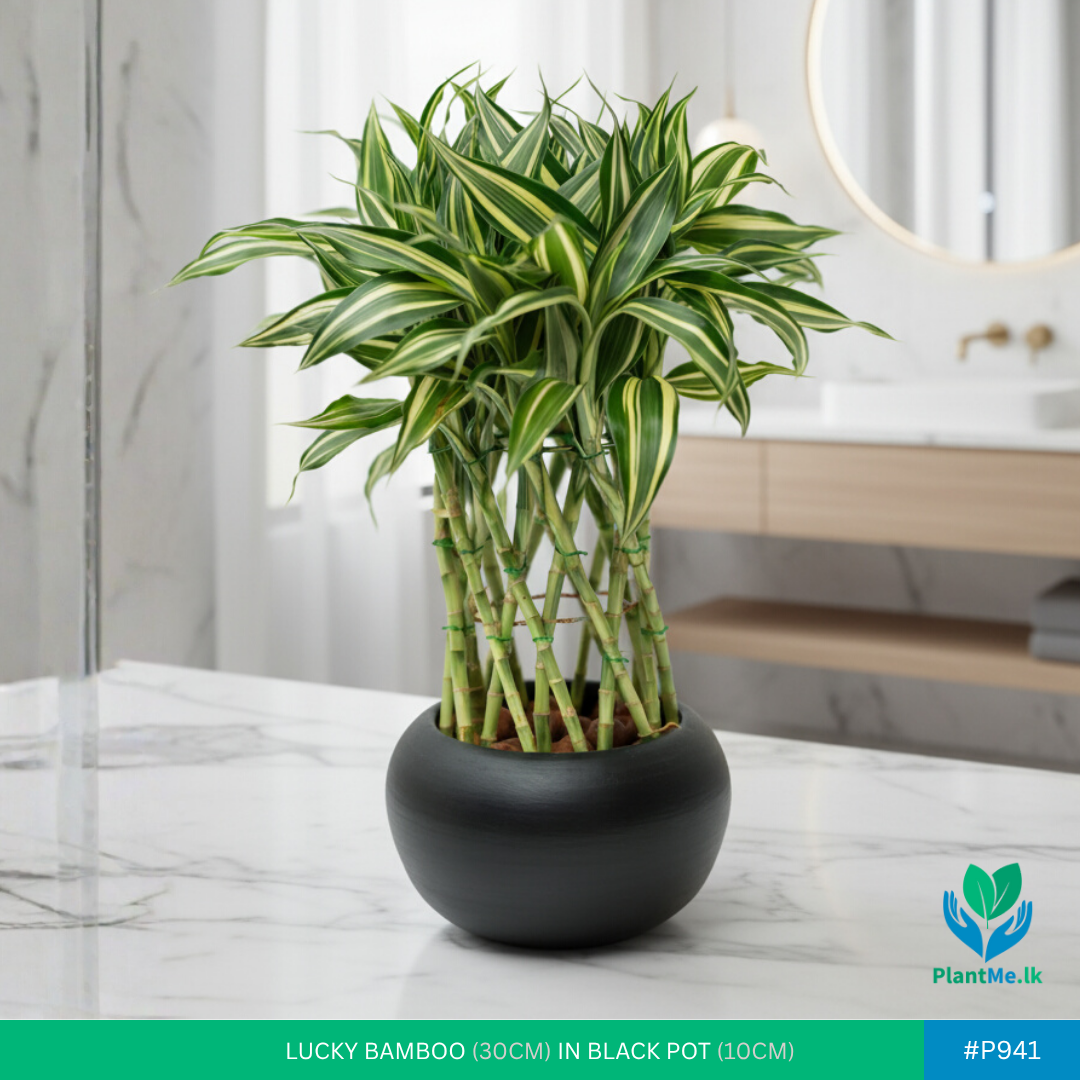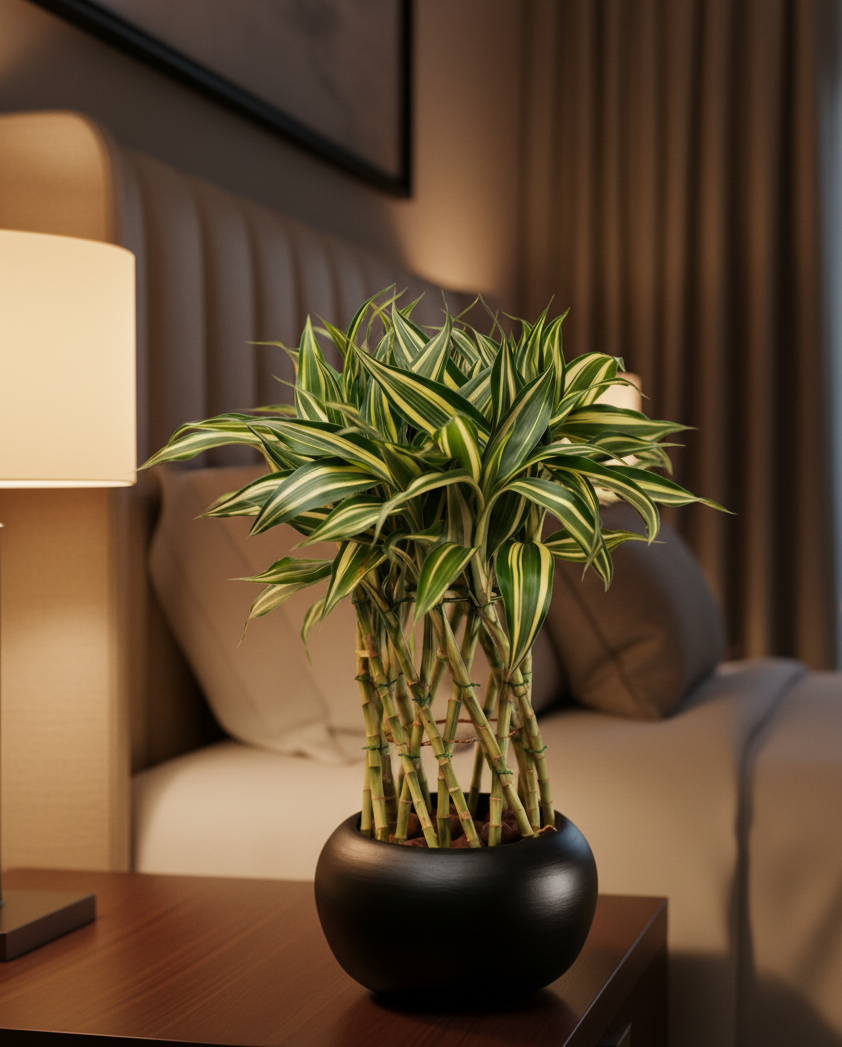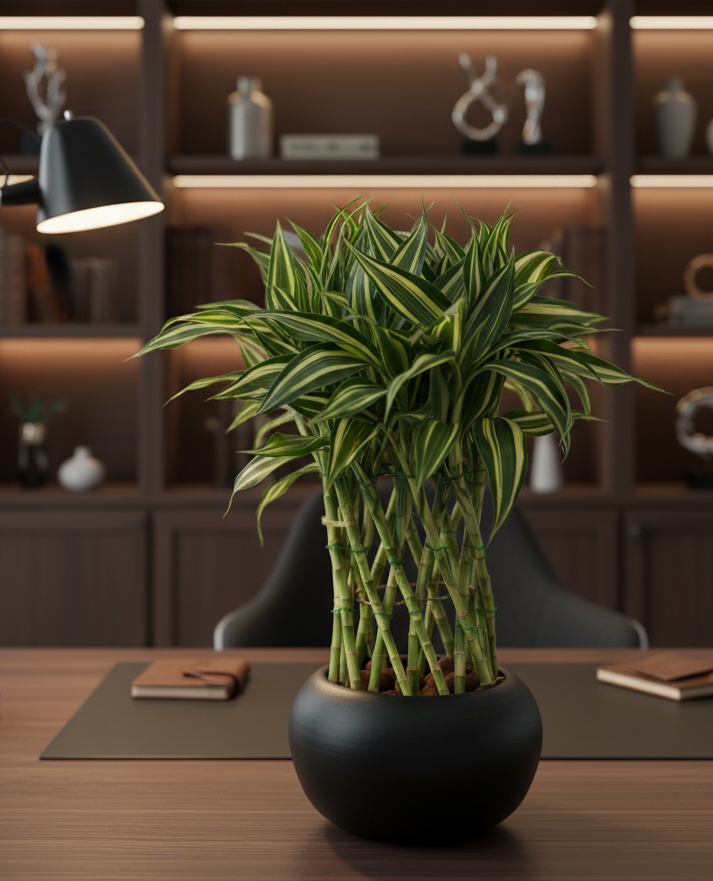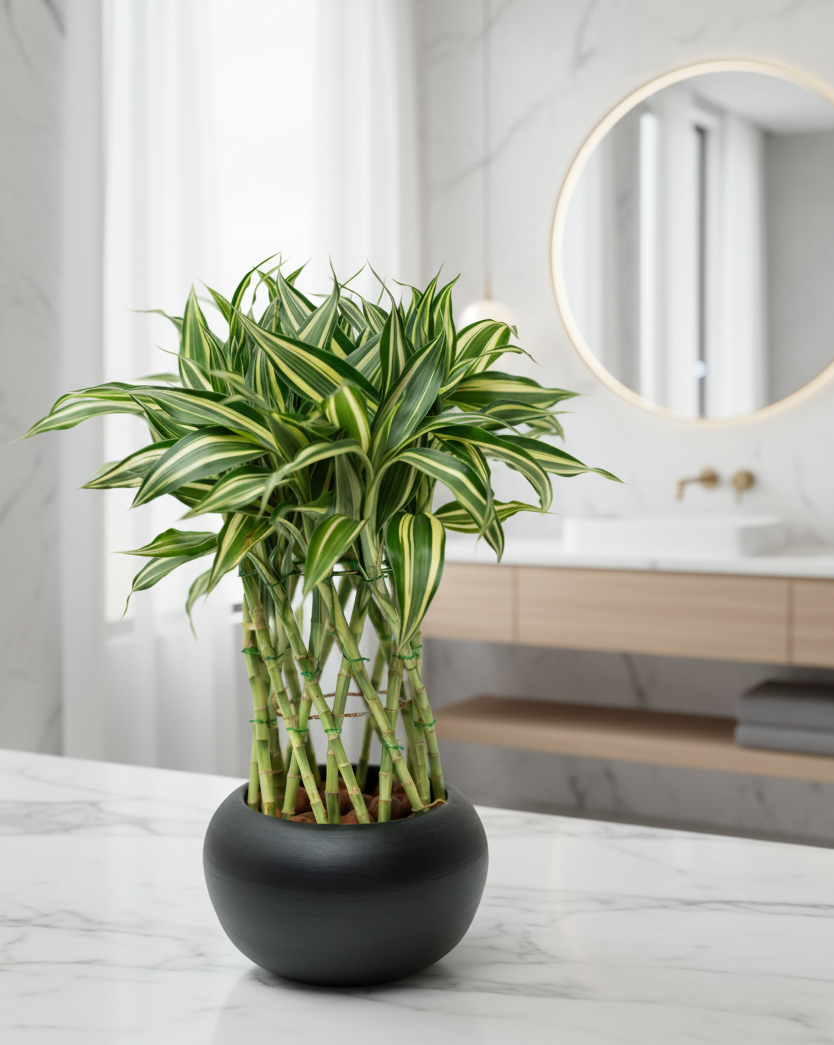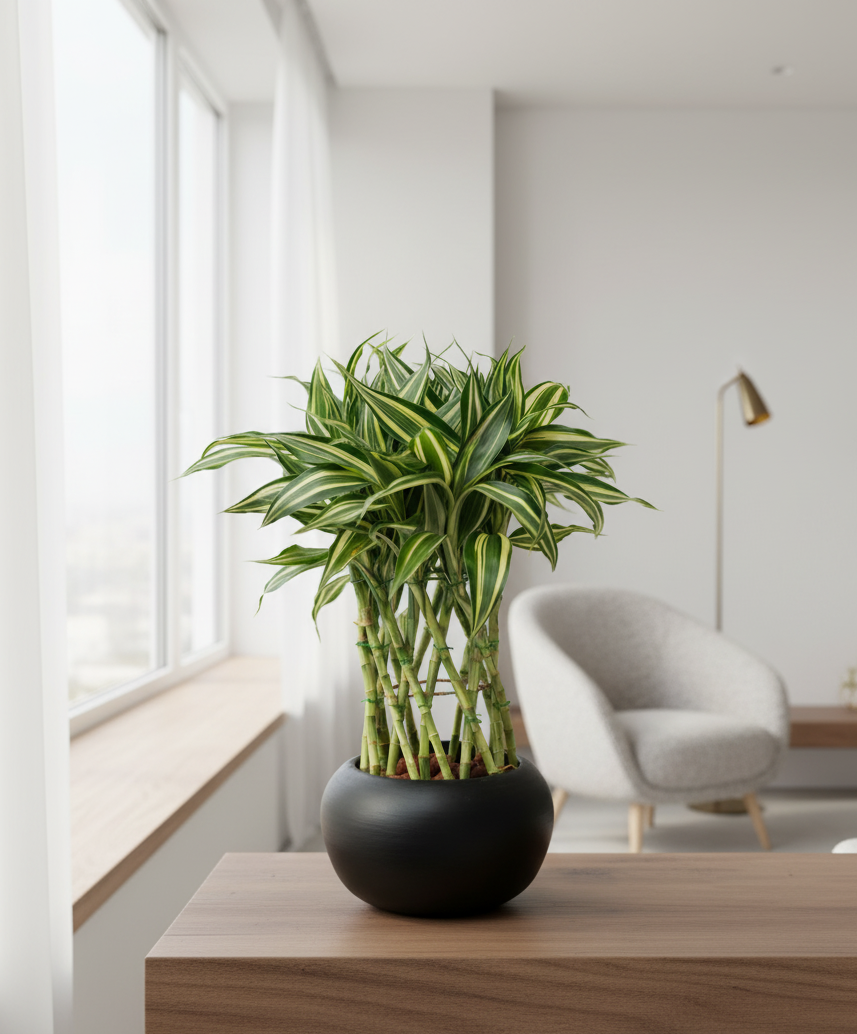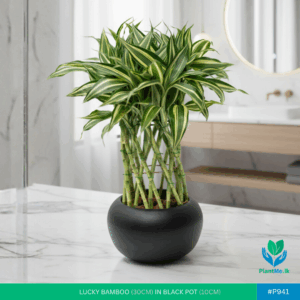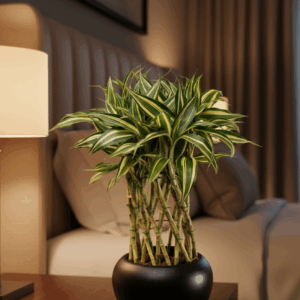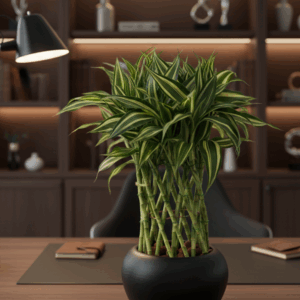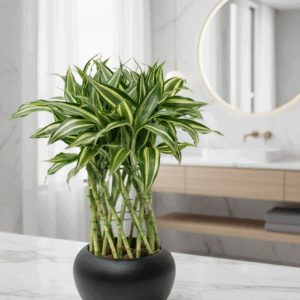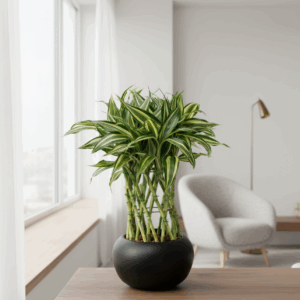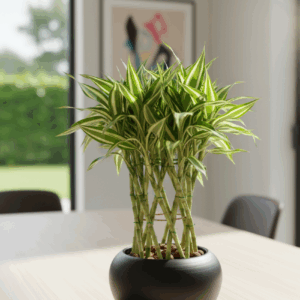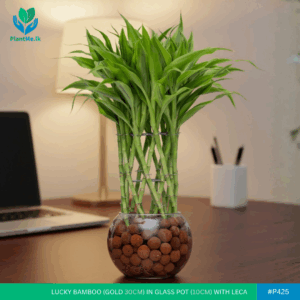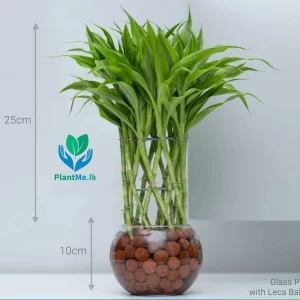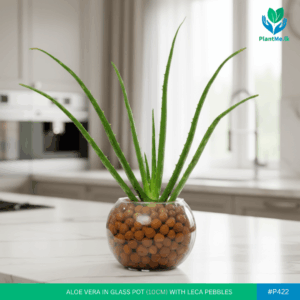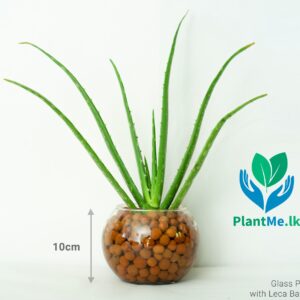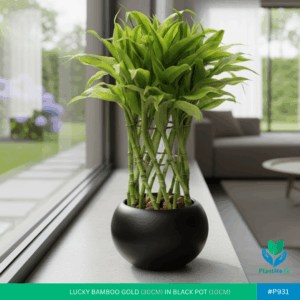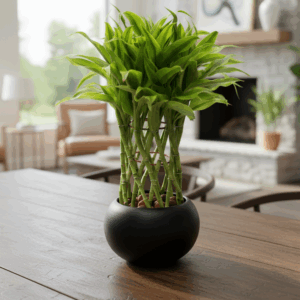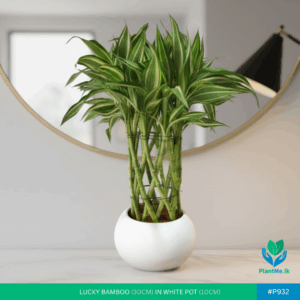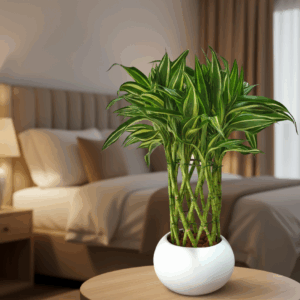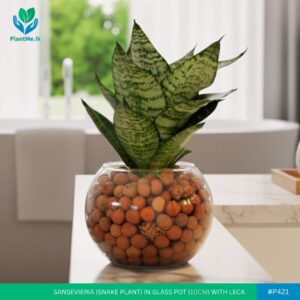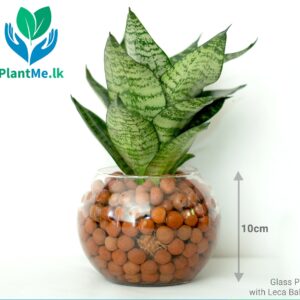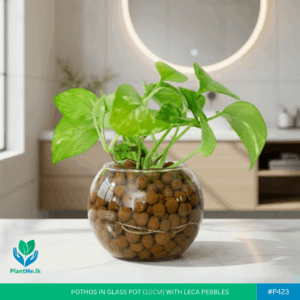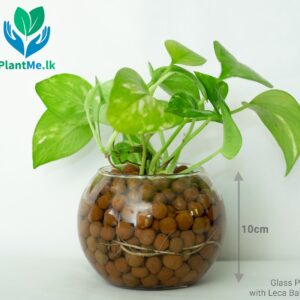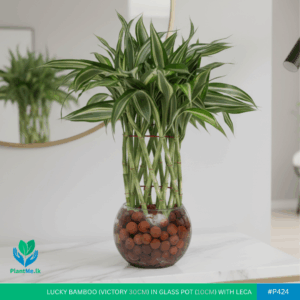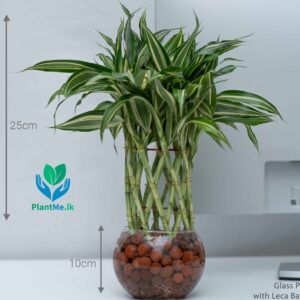Lucky Bamboo Victory in Black Pot | #P-941
Rs. 3,500.00 Original price was: Rs. 3,500.00.Rs. 2,800.00Current price is: Rs. 2,800.00.
🌿 Premium Indoor Plant – Lucky Bamboo Victory in Black Pot 🌿
🪴 Pot Diameter: 10 cm
✨ Highlights:
🌟 Distinctive Lucky Bamboo Victory variety — a timeless symbol of success, growth & good fortune
🖤 Sleek matte black pot adds a bold and elegant touch to modern interiors
💧 Low-maintenance plant — water once a week and keep in bright, indirect sunlight
🏡 Perfect for homes, offices, and reception areas seeking a fresh, calming vibe
🎍 Enhances any space with natural greenery and minimalistic charm
🎁 An ideal gift for new ventures, housewarmings, or special occasions
🌍 Eco-friendly and air-purifying, creating a healthier indoor atmosphere
(Each plant is naturally grown — size and color may vary slightly) 🌾
Lucky Bamboo Victory in Black Pot – A Premium Symbol of Success and Positive Energy by PlantMe
PlantMe’s Lucky Bamboo Victory in Black Pot is a masterpiece of modern indoor greenery—a symbol of growth, fortune, and resilience. With its naturally twisted, spiral stems that represent upward movement and triumph, this plant stands gracefully in a sleek matte black pot that enhances its beauty and elegance. It’s more than a decorative piece—it’s a living emblem of progress, calm, and prosperity.
About Lucky Bamboo Victory
The Lucky Bamboo Victory (Dracaena sanderiana var. Victory) is a remarkable variant of the traditional Lucky Bamboo, featuring its distinctive spiral stems and rich green leaves with a gentle golden sheen. Each curl represents personal and professional victory—making it a meaningful addition to homes, offices, or any space where motivation and balance matter. Known for its adaptability and low-maintenance nature, it is a plant that thrives almost anywhere while adding positive energy to your surroundings.
Stylish Presentation in a Black Pot
Our Lucky Bamboo Victory comes beautifully arranged in a premium black ceramic pot—designed to bring contrast, sophistication, and modern appeal. The dark, elegant pot enhances the plant’s lush green tones, creating a stunning visual centerpiece. The minimal, matte finish complements all interior styles, from contemporary to classic décor.
- Pot Type: Premium matte black ceramic pot
- Pot Height: Approximately 10–12 cm
- Plant Height: Around 25–35 cm
- Style: Decorative indoor accent with a luxury touch
Why Choose PlantMe’s Lucky Bamboo Victory in Black Pot?
- 🏆 Symbol of Success: Each spiral stem represents growth, progress, and personal victory.
- 🌿 Low Maintenance: Thrives with minimal watering and care.
- 💧 Water-Based Setup: Clean, soil-free arrangement that prevents mess or pests.
- 🌞 Adaptable Light Tolerance: Grows beautifully under both natural and artificial light.
- 🖤 Elegant Aesthetic: The black pot adds bold contrast, sophistication, and a professional vibe.
Product Details
- Plant Type: Lucky Bamboo Victory (Dracaena sanderiana var. Victory)
- Pot Type: Matte Black Ceramic Pot
- Light: Bright, indirect light
- Watering: Once every 7–10 days (keep roots moist, not flooded)
- Placement: Indoor – ideal for tables, desks, and reception counters
Care Instructions for Lucky Bamboo Victory
1) Lighting
Place your Lucky Bamboo Victory in soft, indirect sunlight. It also adapts well to artificial lighting, making it perfect for office environments or shaded areas of your home. Avoid harsh direct sun, which can cause leaves to fade or scorch.
2) Watering & Maintenance
- Keep the roots slightly moist by adding a small amount of clean, filtered water once a week.
- Replace water every 10–14 days to prevent stagnation.
- Rinse the pot gently if any algae or mineral buildup appears.
Tip: If the plant is in stones or pebbles, ensure they remain damp but not submerged—this keeps roots oxygenated and healthy.
3) Temperature & Environment
The Lucky Bamboo Victory thrives in temperatures between 18°C and 30°C. Keep it away from strong air conditioning or heating vents. Normal indoor humidity is sufficient for maintaining vibrant growth.
4) Fertilizing
Feed occasionally with a diluted, balanced liquid fertilizer every 2–3 months during the growing season. Avoid overfeeding—Lucky Bamboo prefers a clean, light nutrient mix.
5) Grooming
- Trim yellow or older leaves using clean scissors.
- Rotate the pot occasionally to ensure even light exposure.
- Wipe leaves with a soft, damp cloth for a glossy finish.
Symbolism & Feng Shui Benefits
According to Feng Shui, Lucky Bamboo Victory is a plant of upward momentum and perseverance. The spirals signify steady growth, while the number of stalks can represent different forms of prosperity:
- 2 stalks: Love and unity
- 3 stalks: Happiness, wealth, and longevity
- 5 stalks: Health and balance
- 7 stalks: Prosperity and success
- 9 stalks: Great luck and achievement
The black pot is symbolic of grounding energy—it absorbs negativity and enhances focus, making this plant a strong Feng Shui element for stability and protection. Place it in the east or southeast corner of your space for best results.
Perfect for Every Space
- 🏠 Home décor – Brings natural beauty to living areas and bedrooms.
- 🏢 Offices – Inspires motivation and productivity at work.
- 🎁 Gifting – A meaningful present for new beginnings, achievements, and celebrations.
- 🧘 Meditation spaces – Adds balance, peace, and harmony to calming environments.
PlantMe Quality Promise
Each Lucky Bamboo Victory from PlantMe is handpicked for its vibrant health, perfectly shaped spirals, and bright leaves. The plant is arranged professionally in a durable black pot, ready to enhance your indoor aesthetics instantly. We ensure every piece is assembled with care, beauty, and balance—so you receive a long-lasting indoor plant that represents true growth and success.
FAQs — Lucky Bamboo Victory in Black Pot (PlantMe)
1) How often should I water my Lucky Bamboo?
Once a week is enough. Keep the roots moist but never fully submerged for long periods.
2) Can I place it under fluorescent lights?
Yes, Lucky Bamboo Victory thrives under both natural and artificial lighting conditions.
3) What does the black pot symbolize?
The black pot represents stability, grounding, and protection—balancing the Lucky Bamboo’s vibrant energy.
4) Do I need to use fertilizer?
Only occasionally. Use a diluted fertilizer every 2–3 months for brighter leaves and stronger growth.
5) Why are the leaves turning yellow?
This may be caused by too much direct sunlight or chlorine in tap water. Switch to filtered or rested water and move it to softer light.
6) Can I grow it without soil?
Yes! Lucky Bamboo grows beautifully in water with small pebbles or LECA to hold it upright.
7) Is it safe for pets?
It’s mildly toxic if ingested by pets. Keep it out of reach of cats and dogs.
8) How tall does it grow?
Generally 25–35 cm tall, depending on light and water. The spiral shape remains compact and decorative.
9) What’s the best spot for it in my home?
Place it in bright, indirect light—like near a window or on a side table. Avoid direct afternoon sunlight.
10) Why choose PlantMe’s Lucky Bamboo Victory?
PlantMe’s version features premium spiral bamboo stalks potted in a sleek black ceramic pot for a perfect balance of style, symbolism, and sustainability—ready to display or gift with pride.

